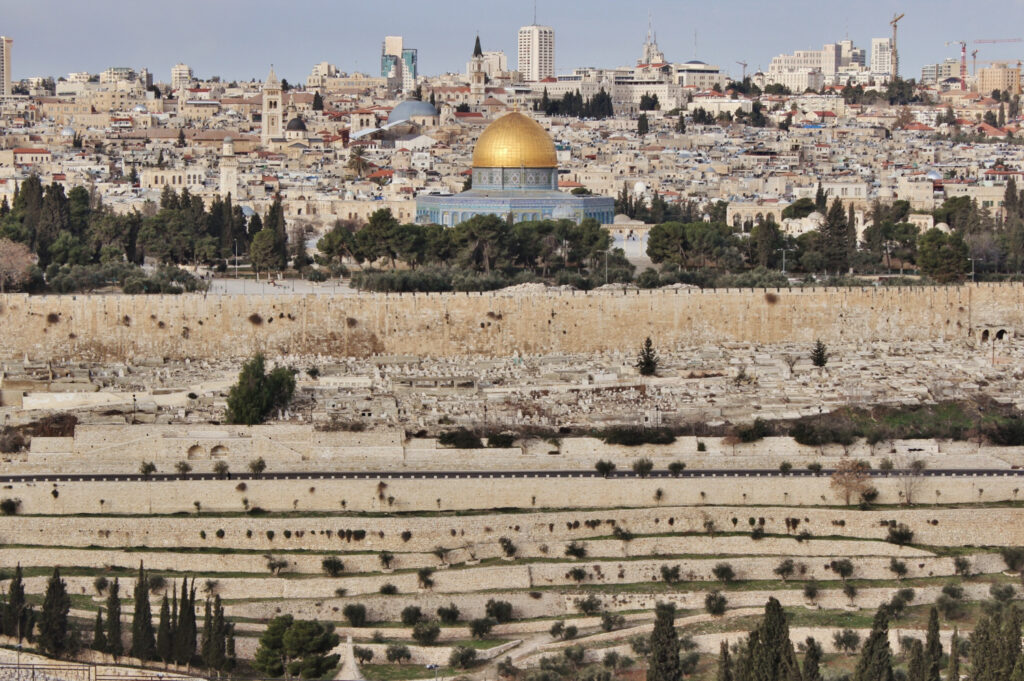A Guide to Jewish Religious Sites in Jerusalem

Jerusalem is the most sacred city in Judaism, it is the capital of the Jewish Homeland and holds a special place in the hearts of Jews worldwide. Every Jew should try to visit Jerusalem at least once in their lifetime. To ensure you see all of Jerusalem’s top Jewish sites, join a biblical City of David tour. Here is a guide to the Jewish religious sites in Jerusalem that should be included in any trip to the Holy Land.
Table of Contents
Old City of Jerusalem
Western Wall
The number one Jewish religious site in Jerusalem is the Western Wall (Wailing Wall or Kotel). You’ll find it just inside the Old City’s Dung Gate facing the Western Wall Plaza. Historically, it is the last remnant of the Second Temple, destroyed in 70 AD, and was part of the Temple’s retaining wall that once enclosed Temple Mount. Jewish pilgrims from around the world are drawn to its ancient stones and the spiritual environment that surrounds the site. You can place handwritten notes within the Walls crevices, containing personal prayers or wishes. The Western Wall provides a tangible link between the present and the sacred history that defines the Jewish faith. If you want to delve deeper into the history of the Western Wall you can visit the Western Wall Tunnels. You’ll move through tunnels beneath the Old City, and see hidden sections of the Western Wall as well as ancient archaeological remains.
Temple Mount
Although today Temple Mount (Mount Moriah) is not used by Jews for prayer, it still retains incredible importance as a Jewish religious site. Both the First Temple and Second Temple stood on Temple Mount. Several important biblical events are also thought to have occurred here including the Binding of Isaac. According to the Talmud, Temple Mount is the site of the Foundation Stone where the world was created.
Four Sephardic Synagogues
The Jewish Quarter of the Old City is home to many synagogues but four of them stand out as particularly historic and special. The synagogues made up a compound of adjoining sanctuaries that included the Yochanan Ben Zakai Synagogue, the Eliyahu Hanavi Synagogue, the Emtsai Synagogue, and the Istanbuli Synagogue. After being destroyed in the War of Independence of 1948, they were used as stables, but years later in the late 1960s they were rebuilt and today are active places of worship.
Hurva Synagogue
This large synagogue in the heart of the Jewish Quarter of the Old City was originally built in 1864 but it has been destroyed twice since then and rebuilt three times. The current structure was completed in 2010. Highlights of the Hurva Synagogue include the tall Torah Ark, the archaeology level in the synagogue’s basement, and the incredible view from the synagogue rooftop balcony that surrounds the synagogue’s dome.
Jewish Religious Sites Beyond the Old City Walls
Mount of Olives Cemetery
The Mount of Olives has many interesting sites but for Jewish visitors, the main attraction is an ancient cemetery. This Jewish cemetery on the slopes of the Mount of Olives faces Temple Mount and the Old City. It dates back over 3000 years and holds between 70,000 and 150,000 graves (depending on who you ask). Among the graves are several famous rabbis and Jewish political and cultural leaders including HaRav Kook, Robert Maxwell, Rashash (Rabbi Shalom Sharabi), and Menachem Begin.
Mount Zion and the Tomb of David
Just outside the Old City is Mount Zion; you can walk from the Old City through Zion Gate, directly to the main attraction of Mount Zion, the Tomb of King David. The Tomb is in a Romanesque-style medieval building and is used as a place of worship. Also on Mount Zion is the Chamber of the Holocaust, a memorial to the Holocaust built in the 1950s.
Jerusalem Great Synagogue
This impressive, large synagogue was built in 1982 in honor of the 6 million Jews who died in the Holocaust. The architectural style was inspired by the ancient Temple, and in the main hall, all 1400 seats have a clear view of the Torah Ark. Highlights include the stained glass windows, the enormous chandelier, and the Mezuzah collection that is on display.
Hecht Synagogue
The Hecht Synagogue stands on the campus of the Hebrew University on Mount Scopus overlooking the Old City. The family of Mayer Jacob Hecht, a US Senator, established the synagogue in his memory. It is known for its unique architecture including two Torah Arks that face each other on either side of the congregation. Unlike traditional synagogues, worshipers face west and can see sweeping views of Temple Mount through a massive window at the front of the congregation.
Archaeological Sites
Southern Wall Archaeological Park
Most people are familiar with the Western Wall, but the Southern Wall is another remnant of the retaining walls built around the Temple Mount by King Herod during the Roman era. In 1967 an ancient staircase was discovered leading up to a gate that would have been used by Jewish pilgrims entering the Temple. The Southern Wall Archaeological Park is the largest archaeological site in Jerusalem. Enter the park from the Dung Gate, and explore the excavated cobbled streets, stores, and ritual baths used by Jewish pilgrims during the Second Temple period.
City of David
The original City of David was not where the Old City stands today but on a ridge to the south of Temple Mount, outside the Old City walls. King David conquered a Canaanite fortress about 3000 years ago and built his capital. Today the site has been excavated and highlights include the remains of David’s palace, bathhouses, and residences. You can stand on the observation platform and look out across the archaeological park. There are also several elaborate ancient water systems with channels carved out of the rock. Visitors can walk through some of the subterranean channels and follow the 7th century BC Hezekiah’s Tunnel that once brought water from Gihon Spring to the Pool of Siloam for the city residents.
Jerusalem Museums of Jewish Interest
Israel Museum and Shrine of the Book
This museum provides a comprehensive understanding of Jewish art, history, and culture. It is the largest and most important museum in Israel. There are exhibits dating back to the prehistoric era and to the present day in sections covering archaeology, Jewish art, fine art, and Jewish life. It holds the most extensive collection of Holy Land archaeological artifacts in the world. In addition, the Shrine of the Book stands on the museum’s 20-acre grounds and holds the iconic Dead Sea Scrolls. These ancient manuscripts date back to the 3rd century BC.
Yad Vashem Holocaust Museum
This is Israel’s memorial and museum in honor of the victims of the Holocaust. The museum campus is spread over beautiful gardens and overlooks the hills of Jerusalem. It includes monuments, sculptures, video testimonials from Holocaust survivors, authentic artifacts, historic photos, and much more. See Holocaust artwork, read excerpts from personal diaries of Holocaust victims, walk down the path of The Righteous Among Nations, and visit the memorial to children who died in the Holocaust. The museum provides a somber yet crucial educational experience, paying tribute to the resilience of the Jewish people and emphasizing the importance of remembrance.
